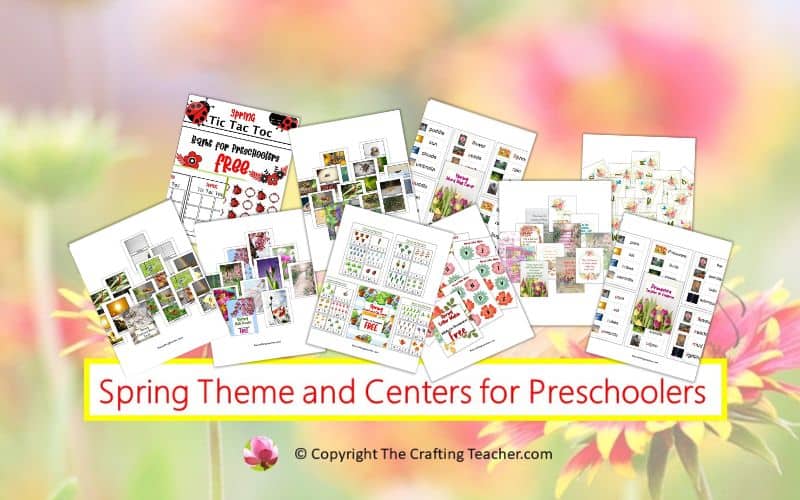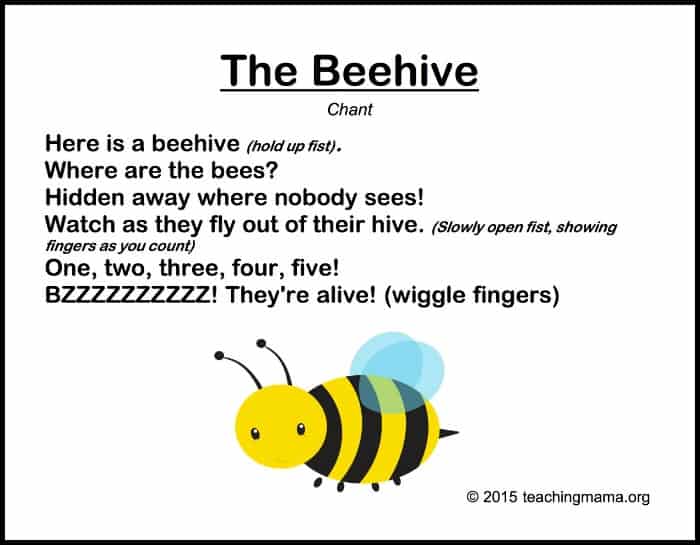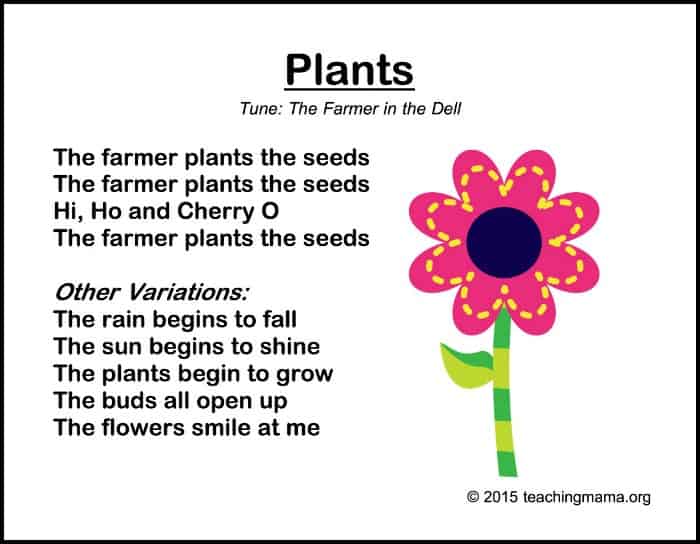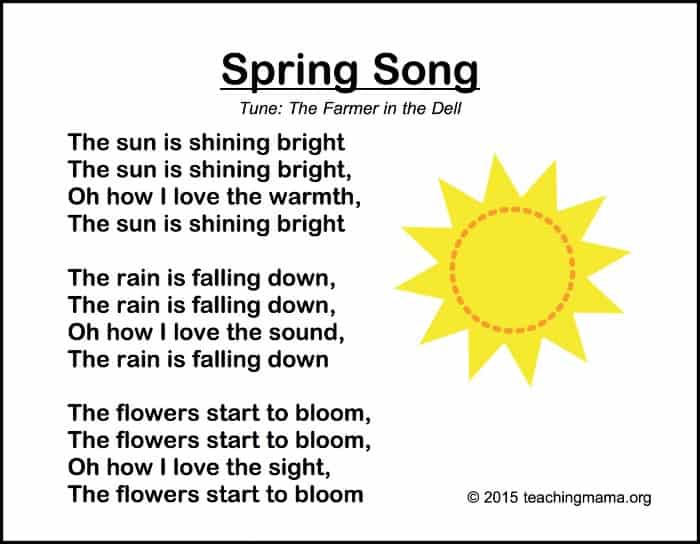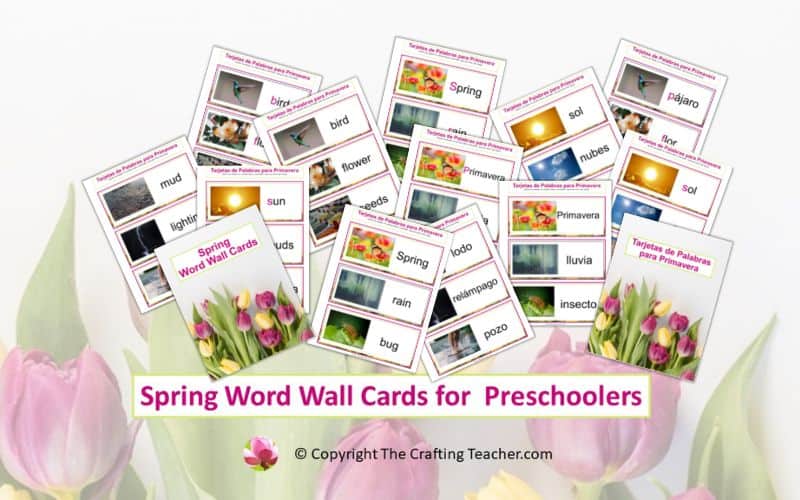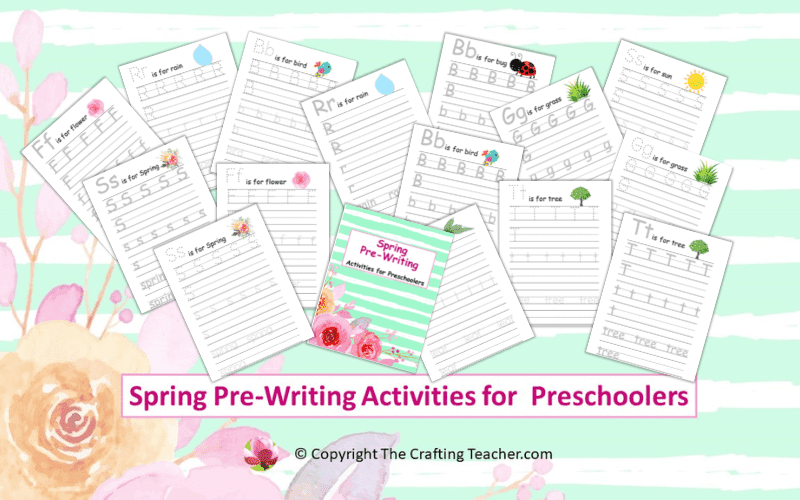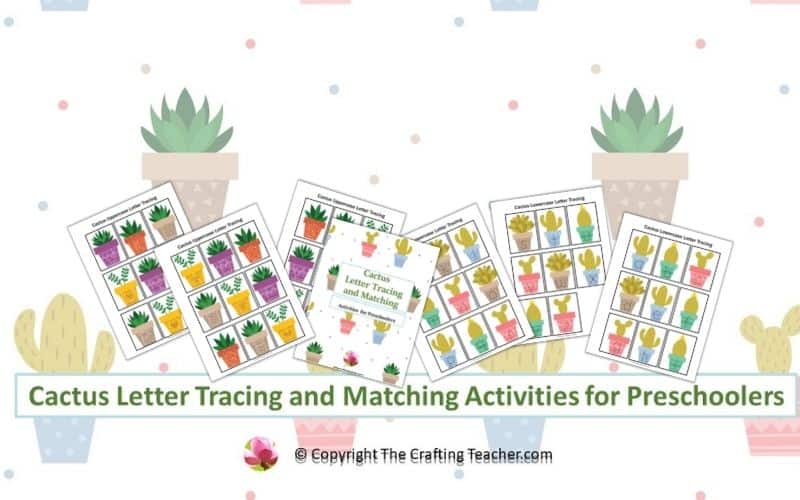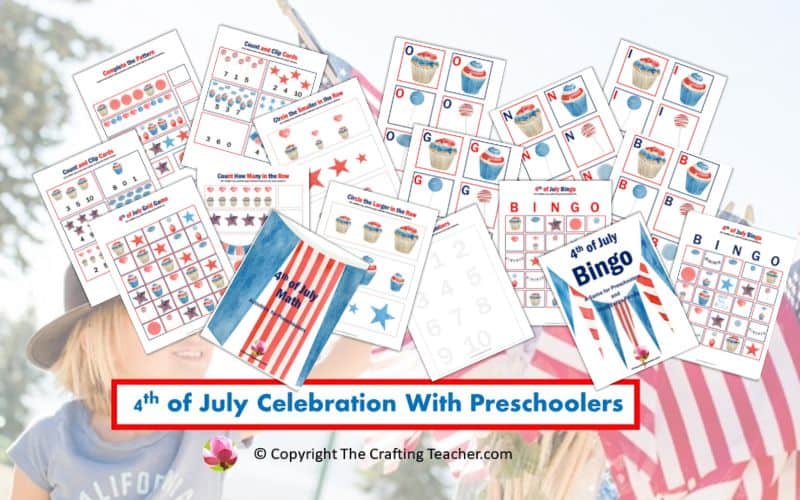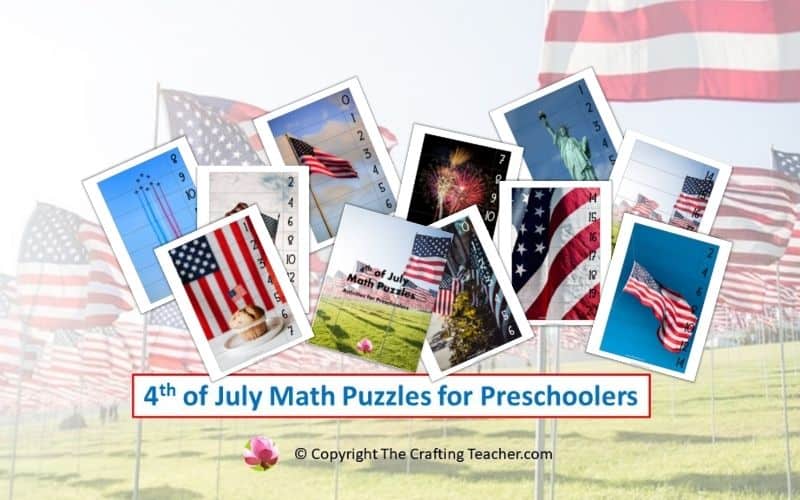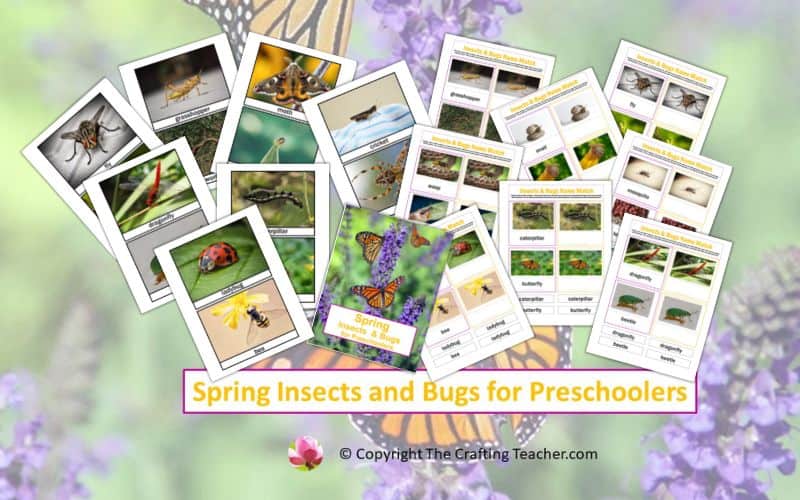Spring Theme and Centers for Preschoolers
Affiliate Disclosure: “This post contains affiliate links, which means I receive a small commission, at no extra cost to you, if you make a purchase using those links.”
Preschoolers are curious about the world around them. They are always asking questions and trying to figure out the why about everything. It is important that use every opportunity to take advantage of their curiosity and use every opportunity to talk to them about things.
Spring is my favorite season. I love how nature seems to come alive and start producing new sprouts and babies. Here in Florida seems like we are always in Spring, but in reality, we still feel the effects of Winter, to a certain extension. The only thing I really don’t like is the heat that comes with it.
Spring allows us to do a lot of fun activities especially outdoors, and address some of my favorite themes like flowers, bugs, rain, garden, and baby animals, which will have your preschoolers super engaged and learn a lot for sure.
On this occasion, I wanted to bring you a general overview of the theme, but make sure to address every center, providing you with all kinds of activities with free printables, some created by me and some from great educators, to ensure your children enjoy and learn as much as possible, no matter if you are in the classroom or at home.
Circle Time
Circle Time is a very important activity to kick off the day and introduce what you have scheduled for that day, that could be a theme, a letter, a number, or whatever that may be. It is also a time for preschoolers to learn how to respect each other and the teacher while they are together as a large group.
I like to start circle time with a song or a storybook related to the theme I have for that week, in this case, Spring, and then continue with a short matching activity.
One song I like for this purpose is “This is the Way (Spring)” by Fantastic Fun and Learning. It’s super fun and they provide you with a free printable of the song, so click on the link to get yours. You’ll love it!
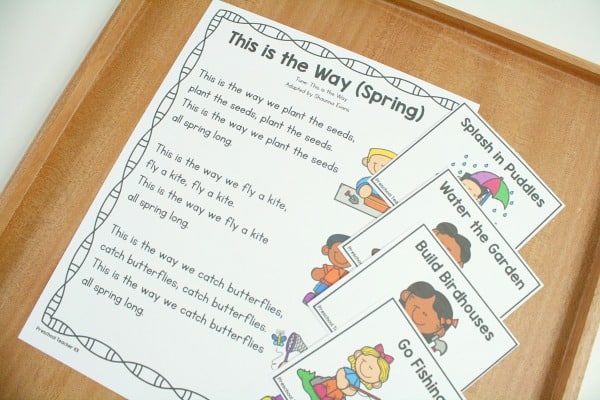
Literacy Center
Literacy activities give preschoolers the foundation for reading and writing. It is important to use different opportunities to help them learn, and these activities can be as simple as reading a story, writing lists, singing, and playing rhyming games.
Spring Letter Match Activity
Invite your preschoolers to match upper case and lower case letters with this FREE Spring letter match activity! Simply place the cut-out flowers and leaves inside a basket on a table, and let them have fun trying to find the matching letters. It’s okay if they want to do it with a partner.
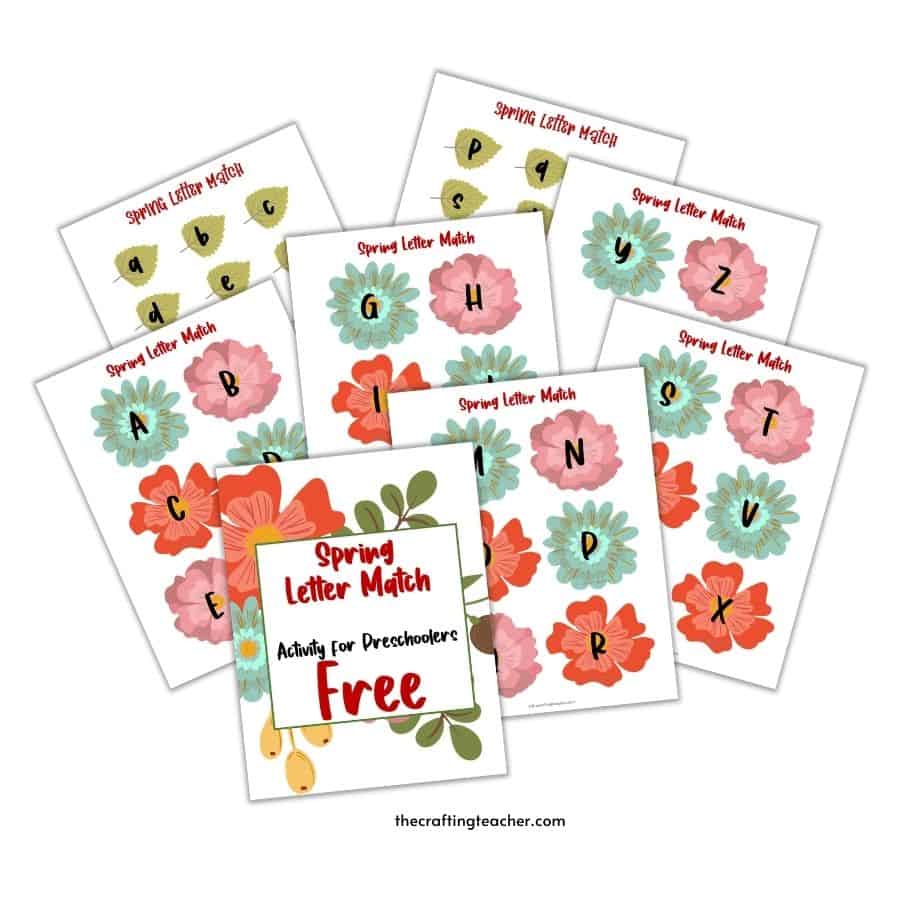
Spring Compound Word Cards
A lot of words related to Spring are compound words, giving you a perfect opportunity to introduce new ones and have fun with them. For this purpose, I created a free set of 12 pages of two cards each. Six of the pages with complete pictures and six of the pages with the same pictures but dividing the compound words into two words with a line, to make it easy for you to cut it into have, and turn it into an activity where the children can put together and separate the two half while practicing the words.
You can place them in the literacy and writing centers, where the children can put them together, copy them, trace the words on top, or match the words with plastic ones.
To extend the activity you can use the:
- To introduce the syllables of each word. To do that your present that card and clap every syllable of the word on each card.
- As a spelling activity. Have your students say the letter of each word in the picture you are showing.
- As a matching activity, where the students can match the picture with the written word.

Library Ideas
If you have been on my site before, you may know how important I consider books. Reading is one of my favorite things, not just for myself, but also for my kiddos.
Gather fiction and non-fiction books about Spring, bugs, baby animals, plants, flowers, weather, and others to support the theme. There are tons of beautiful ones that you can use, which could be found at your local library, on a used bookstore, or on Amazon. These are some of my favorites:
Books about Spring
Goodbye Winter Hello Spring by Kenard Pak. This story is about a boy and his dog exploring nature and how they say goodbye to winter and welcome spring.
I Am Spring by Rebecca and James McDonald. This story takes young children on a journey about how the day becomes longer, the leaves begin to sprout, and bugs and animals that were hiding start to reappear, teaching young learners the important changes that happen during Spring.
I See Spring by Charles Ghigna. This story celebrates the season of Spring with a rhyming, easy-to-read test about raindrops, robins, bluebells, and butterflies!
It Just Blooms by Deanna Chesley. This is a story that will help children of all ages understand that they are perfect just the way they are and that they can bloom in their own special way and in their own perfect time!
Lola Plant a Garden by Anna McQuinn. This story is about how Lola and her mom plan Sunflower seeds together and create a beautiful garden where she and her friends eat cakes and punch and read a story amongst the flowers.
Planting a Rainbow by Lois Ehlert. This author uses this book to teach young children about colors and flowers.
Spring is Here by Will Hillenbrand. This cute story talks about a mole trying to wake up his bear friend from his long winter nap, baking a special springtime, A perfect read-aloud, full of simple sound words and lots of repetition, Spring is Here is ideal to share with young readers to celebrate the changing of the seasons.
The Tiny Seed by Eric Carle. A classic story that talks about the life cycle of a flower through the adventures of a tiny seed, perfect for the children to act out the story and use it as an inspiration to create their own wildflower garden.
Up in the Garden and Down in the Dirt by Kate Messner. This sweet story talks about things you see in the garden like leaves and sprouts, growing vegetables, and ripening fruit, but also about the world of earthworms digging, snakes hunting, skunks burrowing, and all the other animals that make a garden their home.
When Spring Comes by Kevin Henkes. This author uses striking imagery, repetition, and alliteration to introduce basic concepts of language and the changing of the seasons.
Books about Spring Animals
Home for a Bunny by Margaret Wise Brown. This is a story about a furry, lovable bunny who goes on a springtime journey to find a home for him.
The Backyard Bug Book for Kids by Lauren Davidson. Take children on an educational adventure to introduce them to the types of bugs they’re likely to see during their day, then help them remember what they’ve learned with fun, on-the-page challenges.
The Honeybee by Kirsten Hall. Takes children on a journey from flower to flower with a sweet honeybee. A beautiful and sweet story excellent for Spring, and ideal to introduce bees and their key importance for pollination.
Books about Spring Weather
All About Weather by Huda Harajli MA. With this story children will learn all about the four seasons, how clouds form, why it rains, what causes a rainbow, and other phenomena that happen around them every day.
How the Crayons Saved the Rainbow by Monica Sweeney. This cute story talks about how rainbows disappeared living Earth was left with no color … and how a little box of crayons takes it upon itself to bring color back to the world.
Let It Rain by Maryann Cocca-Leffler. This author celebrates the beginning of Spring talking about how snow is melting, flowers are blooming, light rain is falling, and other signs of this coming season.
Little Raindrop by IgloBooks This beautifully illustrated story talks about what happens to a raindrop when it falls from the sky and offers a perfect introduction to the water cycle.
Singing in the Rain by Tim Hopgood. This story brings to life Sinatra’s classic song, jumping in puddles, raising umbrellas, and dancing with joy through the pages of this beautiful picture book.
Splish Splash by Josepha Sherman. While investigating rain, learn about the water cycle and problems with rain, including droughts and floods.
Worm Weather by Jean Taft. An imaginative and playful story, this book talks about how a little worm and some kids enjoy a rainy day, having fun splashing through the puddles.
Non-fiction Spring Books
A Nest is Noisy by Dianna Hutts Aston. This carefully researched book introduces children to the fascinating world of nests, from those of tiny bee hummingbirds to those of orangutans high in the rainforest canopy.
Animals in Spring by Jenny Fretland VanVoorst. In this book, children will learn how animal behavior changes during the spring season, adapting to changing weather conditions. A labeled diagram shows familiar animals born in the spring, while a picture glossary reinforces new vocabulary.
Animals in Spring by Kathryn Clay. This author talks about how different baby animals are born and act, using lovely photos and a simple design.
Animals in Spring by Martha Elizabeth Hillman Rustad With this book children will learn how animals are born, others wake up from long winter slumbers and others migrate from winter homes to summer homes, during the spring season.
Tall Tall Tree by Anthony D Fredericks. This counting and rhyming story talks about the last remaining northern California’s old-growth redwood and includes accurate scientific information about redwood trees and the habitat they create, making this book important for young readers at home and in the classroom.
Everything Spring by Jill Esbaum. In this beautifully photographed picture book, young children can see, hear, and feel the warmth of springtime by reading and learning all about chicks, bunnies, and the other baby animals that come out to play in springtime.
How Plants Grow by Dona Herweck Rice. With clear photos and simple, informational text, in this book, children will explore the steps to make plants grow and learn about various parts of the plant including seeds, roots, and leaves.
Light Makes a Rainbow by Sharon Coan. With easy-to-read text and detailed, vivid images, this science book teaches students important scientific subjects and vocabulary terms like prism, energy, and light waves. It also includes a hands-on science experiment to help students apply what they have learned and develop critical thinking skills.
People in Spring by Martha Elizabeth Hillman Rustad. Talks about how people celebrate this special season by planting seeds in gardens and students have their last weeks of school.
Plants in Spring by Martha Elizabeth Hillman Rustad. This book talks about how plants come to life in spring after seeds are planted, sprouts pop up through the soil and colorful flowers bloom.
Rainbows by Martha Elizabeth Hillman Rustad This author uses simple text that introduces readers to the science behind rainbows, including why rainbows occur and what they are made of.
Weather in Spring by Martha Elizabeth Hillman Rustad. This informative book talks about how the weather changes in spring, after the snow melts, the sun starts shining bright, and rain showers and storms arrive.
Over Under in the Garden by Pat Schories. This alphabet book combines informative facts on plants and animals in an A-to-Z presentation, enhanced by richly detailed paintings.
Science
Science is one of my favorite subjects and an important part of any preschool classroom. Since young children are naturally observant, science also offers them many opportunities to make observations and use scientific vocabulary, record data and follow the scientific process to communicate results.
Some preschool teachers might find science difficult to teach, but the secret is not to make it complicated, and simply let your children explore materials, doing many hands-on activities, and allowing them to ask questions.
There are many experiments that you can do with your preschoolers, that are super simple and easy to prepare. Remember that Science doesn’t have to be complicated or difficult, especially for this young age, and regardless of how simple your activities might be, they will feed your children’s natural curiosity and will engage them in discussions and questioning, which will help their young scientific minds bloom and start developing.
Some of the scientific activities and experiments you can do with your preschoolers are:
Sprouting lima beans: simply have your preschoolers place some lima beans in wet cotton balls inside a Zip-lock bag. Tape the bags in a window, where they can receive some sun. Your preschoolers will be delighted to watch their little plants grow. Later, they can plant the sprouts in a cup with soil, and observe them grow into little plants.
Regrowing vegetables from scrabs: have each child bring a scrab of some vegetables from home, such as celery and scallions, avocado seeds, potatoes, carrot tops, pineapple, parsnips, and beets. Have the children place the avocado seeds and potatoes suspended in a cup of water with toothpicks and the rest of the vegetables directly in a bit of water. Then have them observe and record with pictures which vegetables grow first and faster.
Comparing and Sorting Seeds: gather different types of seeds like spinach, peas, rice, beans, squash, pumpkin, cucumber, etc. You can find inexpensive little packages at Dollar Tree and Walmart. Place them separately in an ice cube or egg carton, making sure you place the little baggie with the picture of the seed with each type. Have the children observe them with magnifying glasses, and talk about texture, colors, and sizes. At the end of the week, they can plant the seeds in the garden or pots, and watch them grow.
Discovering How Water Travel Through Flowers: this is one of my favorites. Simply gather some white flowers (I like to use Carnations), food coloring, transparent plastic cups, and water. Have your children put some water in the cups and put a different color of food coloring in each cup. Then place one flower in each cup. Children will observe how the flowers start changing colors to become the color of the water they are sitting on.
How do Plants Breathe? This great activity by Jacquie Fisher will help you create an environment where your students will be able to actually see photosynthesis taking place — the oxygen/carbon dioxide process of plants, with just a bowl of water and a leaf! Simple and fascinating.
Rain Cloud in a Jar: This incredible experiment by Fun Learning for Kids will allow your children to explore clouds and rain in a hands-on and engaging way, with just a handful of inexpensive materials. Plus, she includes a printable recording sheet, where your preschoolers can draw their observations.
Informational YouTube Videos
There are many YouTube videos that you can present to your students, to allow them to observe natural phenomena that otherwise will be difficult for them to see, like the metamorphosis of a butterfly, a ladybug, or a frog, and how ants build their anthills.
Math
We cannot forget about Math. Math provides early learners with vital skills that will be the foundation for their future. Math help children solve problems, recognize and use shapes, measure and develop their own spatial awareness, recognize and copy patterns, and many other important skills.
You can do many Math activities throughout the day. These are just some of them:
- Collect Spring items like seeds, pot mats, and silk flowers to count and take away.
- Have them measure their sprouts with a ruler and record on a chart paper their little plant growth.
- Provide plastic bags and have them make patterns.
- Create a sorting game by giving them petals in different colors and matching color cups to place the petals.
- These Spring Flower Roll and Cover Mats by Fun Learning for Kids are great to teach numbers or letter recognition.
I also created two different FREE activities that you can grab just by clicking on the link. These are:
Spring Count and Clip Cards
This FREE activity will help preschoolers develop their fine motor skills build strength in the muscles on their fingers and hands, and develop a proper pencil grasp.
The freebie includes four pages with six different cards each and very pretty pictures. Your students have to count how many pictures are on each card and use a clothespin to mark the correct number.

Spring Math Puzzles
These FREE activities will encourage your preschoolers to practice their number sequences and put together the different puzzles. This freebie includes ten puzzles with beautiful and real Spring pictures, using different number sequences. You can get your free printable below.

Crafts
Crafts are always fun and an excellent resource to help preschoolers develop their creativity and fine motor skills. Crafts don’t have to be complicated either, and most importantly, let your children make their creations. It’s okay to guide them, but not do it or finish it for them. Some crafts make look horrible and others don’t, but that’s okay. Crafts will show the stage of development in which each of your students is and will make them feel proud and give them a great sense of accomplishment.
Some ideas I have for you today are:
Decorate a Flower Pot: a perfect solution for Mother’s Day present and to plant those little plants they are growing if you did a Science experiment with them. You can get inexpensive cardstock pots in Oriental Trading or clay ones at Dollar Tree. Then you can let your children decorate their pots using paint, or doing decoupage with tissue paper and glue. Easy, and very rewarding.
Coffee Filters Tie-Die Flowers: gather some containers with a different color of tempera paint a little bit diluted with water in each container. Give each child a coffee filter and have them folded in half, then in quarters. Have them grasp the filter by the bottom part and dip a corner upper part in a color, the other corner in another color, and so on (I wouldn’t recommend using more than 2 or 3 colors). Let the excess water drip off the filter, open it up (carefully), and let it dry. When the flowers dry, hold them by the middle and tape them to a stick (they will look like Carnations). Have the children make a bouquet for Mother’s Day.
Music and Movement
Music and Movement is an integral part of any preschool program, and children always love that part of the day. There are a lot of songs and poems you can teach your preschoolers.
There are many songs, rhymes, fingerplays, and poems that you can use for Spring, but I found some that I really like at teachingmama.org, and the best part is that you can download them for free so you can have them handy. These are some examples:
Games
A good way to get the children moving and focused is by using games. There are several games you can use inside or outside the classroom. One of the games I find very interesting and fun is Tic Tac Toc. Your children will be engaged in a friendly competition that will keep their focus and entertained for a while. I created a FREE Spring Tic Tac Toc game for you to use. You just have to click on the link below. It is really simple to put together. You just have to print the pages on cardstock and laminate them.
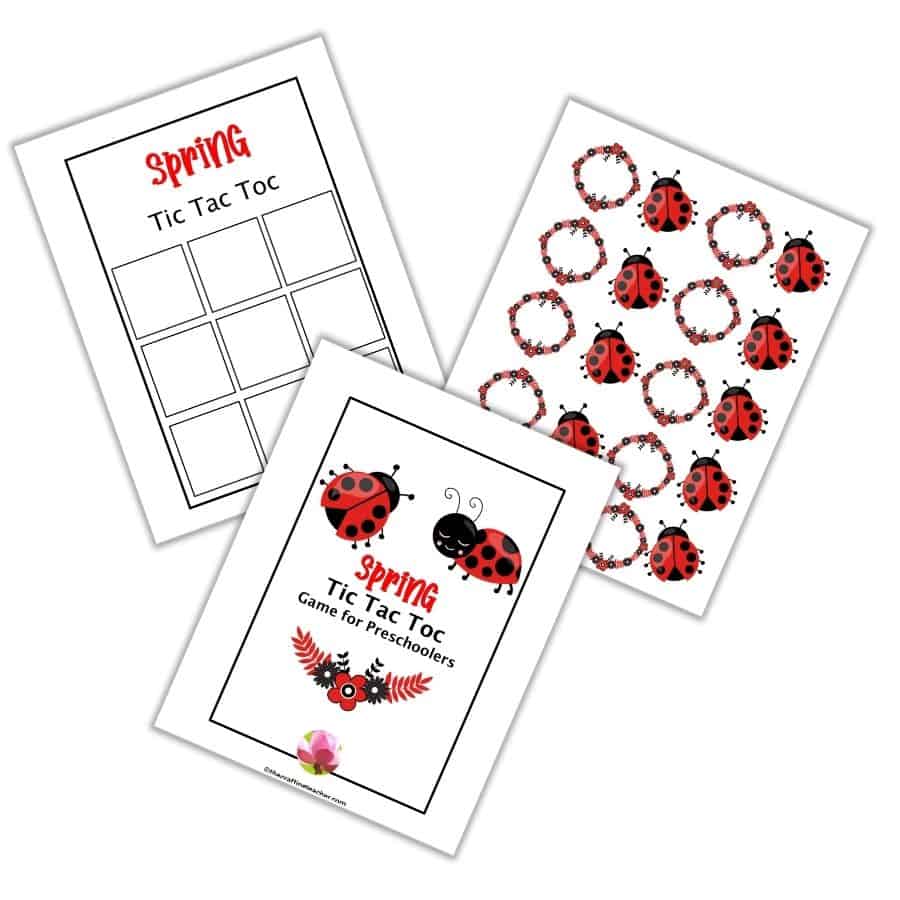
If you don’t want to use the chips I include, you can let them use mini erasers, mini flowers, buttons, plastic counters, or any other small manipulative that can fit in the square. I include some examples below and don’t forget to download the game. You just have to click on the link below.
You can also have your children doing Spring puzzles, going on a nature hunt, or pretending to be camping in the playground. PBS Kids also has many nature-inspired games that you can find here.
Sensory Activities
Sometimes we may think that sensory activities are more for younger children, but that is not necessarily true. Preschoolers enjoy these activities and they give you an excellent opportunity to put their senses to work and ask questions that will encourage children to analyze situations and come up with scientific answers. They also promote imaginary play and language development.
One of my favorite sensory activities for preschoolers is the use of playdough. It is also great to exercise their fine motor muscles. You can offer your children a tray with playdough, rolling pins, and flower cookie cutters to make playdough flowers, and also buttons, pom-poms, pistils, and gems for decoration. You can even add mini pots, ladybugs, and butterflies.
Planting Sensory Tub: fill your sensory tub with dirt, plastic mini pots, mini gardening tools, and artificial flowers. Use the opportunity to talk to your children about the different textures, smells, and colors. Ask them questions about what will happen if they are planting real flowers. What will they need to make them grow, and how to take care of them? It is a wonderful opportunity to integrate sensory play with science and language and vocabulary development.
Dramatic Play
This is a great theme to switch things around in your Dramatic Play area, create a garden store or nursery, and allow your preschoolers to develop their imagination and their creativity.
Include plastic pots, silk flowers, a cash register, rakes and shovels, a mini wheelbarrow, gardening gloves, hats and aprons, seed packages, a mini hose, plastic bugs, and anything else you can come up with, to make your theme come alive.
Writing Area
Preschoolers are at a stage where they are developing their fine motor skills through drawing, coloring, and marking, which is setting the foundation for their future writing process. This stage is called emergent writing.
We must give plenty of opportunities for young children to practice their emergent writing and to encourage them to communicate their thoughts. Also, we should record their ideas taking dictation of what they have to say.
To accomplish this goal, I would recommend including notepads, pencils, crayons, and clipboards in every center. In the Writing Area specifically, you can also add the Spring Word Wall Cards, sticks, and paper to create seed packets, labeled Spring pictures, Spring stencils, stickers, hole punches and stamps, and Spring books, writing paper, and envelopes.
Fine Motor Ideas
After so many years in Education, children still surprise me with the incredible things they can do when you provide them with the right tools.
Even when many of the above activities cross over and help them develop their fine motor skills, I just wanted to mention a few more. These hands-on activities are not only fun but are also educational, and will help your little learners develop their little muscles on their hands and fingers, to prepare them for writing. Some ideas are:
- Bug fossils: children roll playdough into balls and press plastic bugs into it, to make the bugs’ body prints (fossils) on the playdough.
- Make natural prints: children place the paper on the veining part of leaves and roll crayons on top to print the leaf’s veins. They can do the same with bark.
- Cutting nature: let the children cut real leaves and flowers using safety scissors.
- Flower arrangements: provide them with real flowers, pots, water, and safety scissors, and let them create flower arrangements. You can also use silk or plastic flowers if the real ones are not available.
- Spring art: let them create Spring masterpieces using tempera paint, brushes, and paper on the easel, or simply crayons and paper on a table.
- Pollen transfer activity from ABCs to Acts: this adorable activity can also be used to learn about pollen.
Gross Motor Ideas
Even when you don’t necessarily have to do all gross motor activities outside, I like to do most of them in the playground, to have more space. There are many activities that you can do for this purpose. Some activities that come to mind are:
- Go on a nature walk: you can have your children collect leaves, tiny branches, flowers, mini rocks, acorns, etc., and bring them inside to make a nature collage.
- Fly like a bird: race from one end of the playground to the other, flapping their arms (wings) like birds.
- Dance with the wind: take your radio out and play music. Let the children dance and pretend they are moving leaves in the wind.
- Play Spring tag: a simple game children love, they can use plastic or silk flowers to tag their friends instead of their hands.
Outdoor Ideas
Children love to be outside. For many of them is their favorite part of the day. You can take advantage of this to do educational activities that will tie up with your Spring theme very nicely. Some of them are:
- Wildlife observation: when they go outside have them pay real attention to animal wildlife they see. Then when you come back inside you can talk about what they saw.
- Watch the sky: have them lie down and observe the clouds, to see what shapes they spot. You can be surprised how their imagination runs wild!
- Have a picnic: take some tablecloths and their lunch or snack outside, and have a picnic day.
- Blow bubbles: take bubble solutions and different types of bubble wands and let them have fun.
- Plant Vegetables: circle a corner of the playground with a mini fence or use planters, and let them plant vegetable seeds directly on the soil. Over the weeks they can take care of their little seeds, watch them sprout and grow, and when they produce vegetables they can eat them.
Block Center
Bringing your Spring theme to the block center is not difficult. You just have to add spring props like fake leaves and flowers, plastic bugs, gardening tools, smooth rocks, books about Spring, the Spring Insect Cards, and small branches.
Let them turn the Block Center into a garden, a nursery, a flower shop, and anything they can come up with. The idea is for them to let their creativity run wild and have fun, for hours of learning while they play.
Cooking
Kids in the kitchen? Absolutely! It is not just fun but also a perfect opportunity for teachable moments such as reviewing colors and shapes, counting, fine motor, and creativity skills development. In addition, every celebration needs food, and you can use the opportunity to have your preschoolers prepare their own snacks.
Some of the dishes you can do with your preschoolers for the Spring theme are:
- Ants in a log: this super nutritional snack is easy to make. You just need celery, raisins, and peanut butter. Have the children put peanut butter on top of a celery stick, and raisins (ants) on top of the peanut butter. The only thing left is to eat it!
- An Edible Birds’ Nest Snack by the Artful Parent: with peanut butter and pretzel sticks for the nest, and an Easter peep, this snack is adorable, delicious, and very easy to make.
- The Best Blueberry Muffin Recipe by the Artful Parent: what kid doesn’t like muffins, right? This is a deliciously perfect opportunity to practice pre-math measuring the ingredients and to talk about textures, colors, and flavors.
- Bake an Artful Spring Nest Cake with Ice Cream Eggs by the Artful Parent. A simply made cake with hand-made ice cream eggs makes a wonderful cooking experience for your children.
- Coconut Macaroon Nests by Inspired by Charm: these macaroons shaped into nests and decorated with candy eggs are delicious and super easy to make.
Decorations
An important part of any celebration or theme is adding decorations to decorate your classroom, and to put everybody in a good and happy mood. Besides, anybody who enters the classroom must be able to tell what is the theme that you are using that week.
Of course, the most important thing to use as décor is your children’s artwork. It not only gives them a sense of accomplishment but also of ownership. Now, it doesn’t hurt if you want to add Spring borders on your bulletin boards, hang butterflies from the ceiling, or even a banner welcoming spring. It just happens that I created one for you. It’s a free banner and ready for grasp. Just click on the link below.
And since I love to create, I also made some free wall decor with Spring motivational messages that you can print and use in your classroom or at home. You can grab them by just clicking on the link below.
Pin It for Later
If you are in a rush and don’t have time to read the post and download the printable but want to save it for later, pin it to one of your Spring boards on Pinterest.
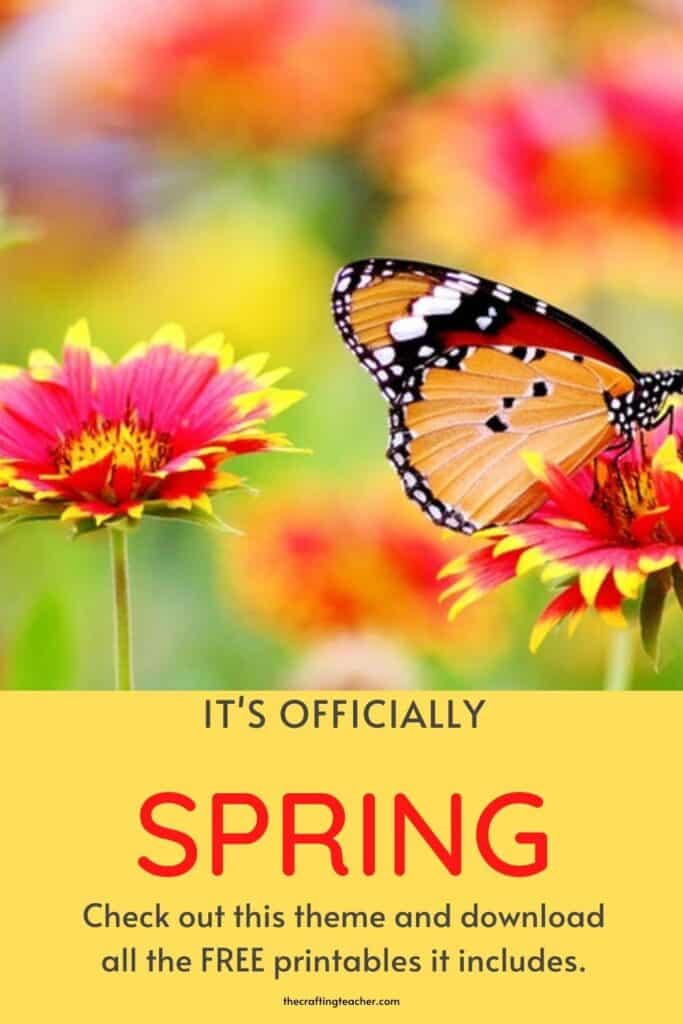
Spring is one of the most exciting seasons. It’s full of life, colors, and textures, and its warm weather makes you feel happy and alive, especially after long winters that many states experiment with.
Here in Florida, the winters are mild, but still, you see a lot of trees that lose their leaves and plants that disappear. The bad part about Spring is that the heat and mosquitoes come back with a vengeance!
Nevertheless, Spring is the perfect season to take long walks and observe nature being reborn. It is an incredible opportunity for you and your children to do activities that are more difficult during other seasons. I hope this is a great season for you, your family, and your students.
Be happy, safe, and creative. I wish you well.
Love,

P.D. Please let me know if you like any of these activities, or if you came up with some other ideas for your classroom. I will love to post them as well.

